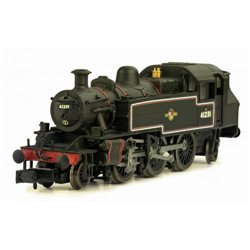In theory, all decoder brands conform to the same standards so should be compatible with all locomotives (providing...
No products
Product successfully added to your shopping cart
There are 0 items in your cart. There is 1 item in your cart.
Search Tips
Christmas and New Year
We are dispatching orders every weekday apart from Christmas Day, Boxing Day and New Year's Day.
If you order is time critical, select next day delivery at checkout.
The shop in Sandown is closed from 25th December, reopening on 30th December.
What is a general purpose locomotive?
When new to the world of model railways, it's likely you will read many articles explaining the best way to go about those crucial first steps, and you may well be advised to make a general-purpose locomotive one of your first rolling stock purchases, but what is one?
A general-purpose loco is a locomotive that can perform many tasks without looking too out of place, a locomotive that can pull a few coaches one minute and a few trucks the next, and all before turning its hand to a spot of shunting in a yard. A medium-sized tank engine or diesel are ideal choices to avoid large mainline locomotives being utilised for tasks that they never would have performed in real life.
General-purpose locomotives will provide greater entertainment while your collection is in its infancy and facilitate greater operational flexibility. Fixed rakes such as HSTs and Pendolinos or iconic locomotives such as Mallard or the Flying Scotsman may be a worthy contender on the wish list but are kind of limited to arriving and departing, which is nice occasionally, but after the fifth or sixth time in ten minutes, loses its appeal.
Click here to receive the tips weekly in your mailbox. You can unsubscribe at any time.








